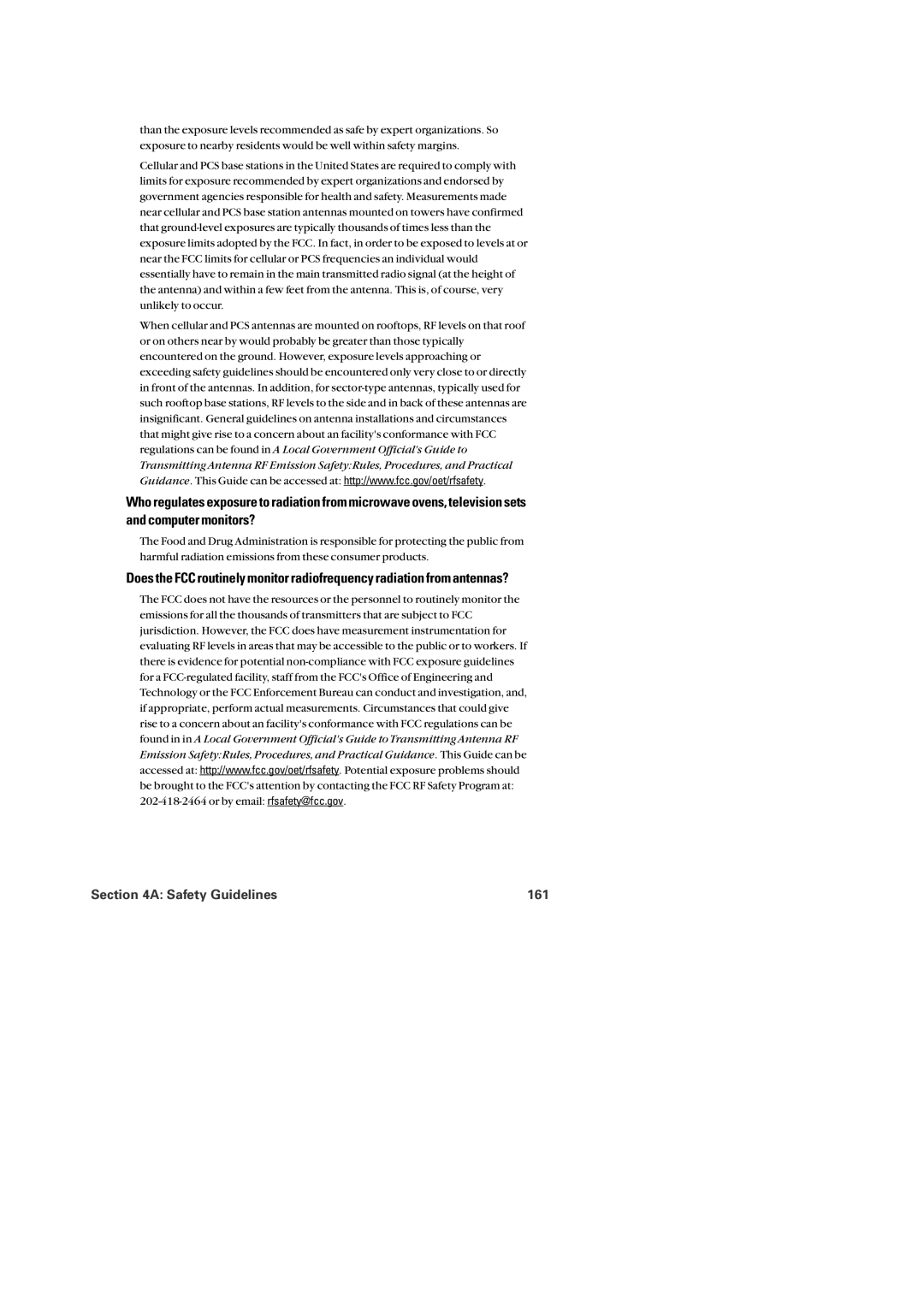
than the exposure levels recommended as safe by expert organizations. So exposure to nearby residents would be well within safety margins.
Cellular and PCS base stations in the United States are required to comply with limits for exposure recommended by expert organizations and endorsed by government agencies responsible for health and safety. Measurements made near cellular and PCS base station antennas mounted on towers have confirmed that
When cellular and PCS antennas are mounted on rooftops, RF levels on that roof or on others near by would probably be greater than those typically encountered on the ground. However, exposure levels approaching or exceeding safety guidelines should be encountered only very close to or directly in front of the antennas. In addition, for
Who regulates exposure to radiation from microwave ovens, television sets and computer monitors?
The Food and Drug Administration is responsible for protecting the public from
harmful radiation emissions from these consumer products.
Does the FCC routinely monitor radiofrequency radiation from antennas?
The FCC does not have the resources or the personnel to routinely monitor the emissions for all the thousands of transmitters that are subject to FCC jurisdiction. However, the FCC does have measurement instrumentation for evaluating RF levels in areas that may be accessible to the public or to workers. If there is evidence for potential
Section 4A: Safety Guidelines | 161 |
